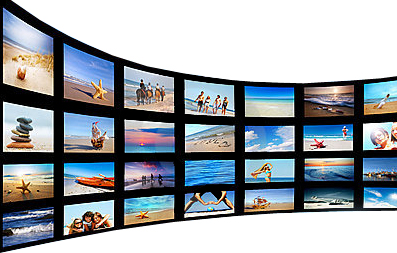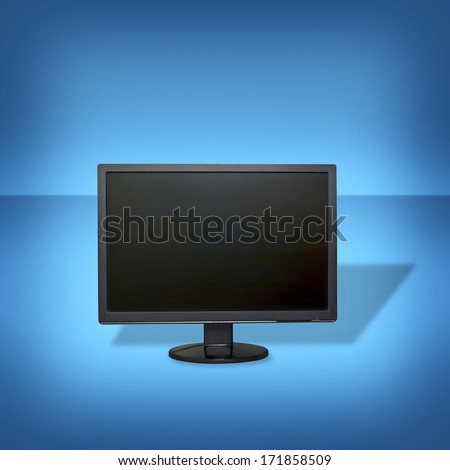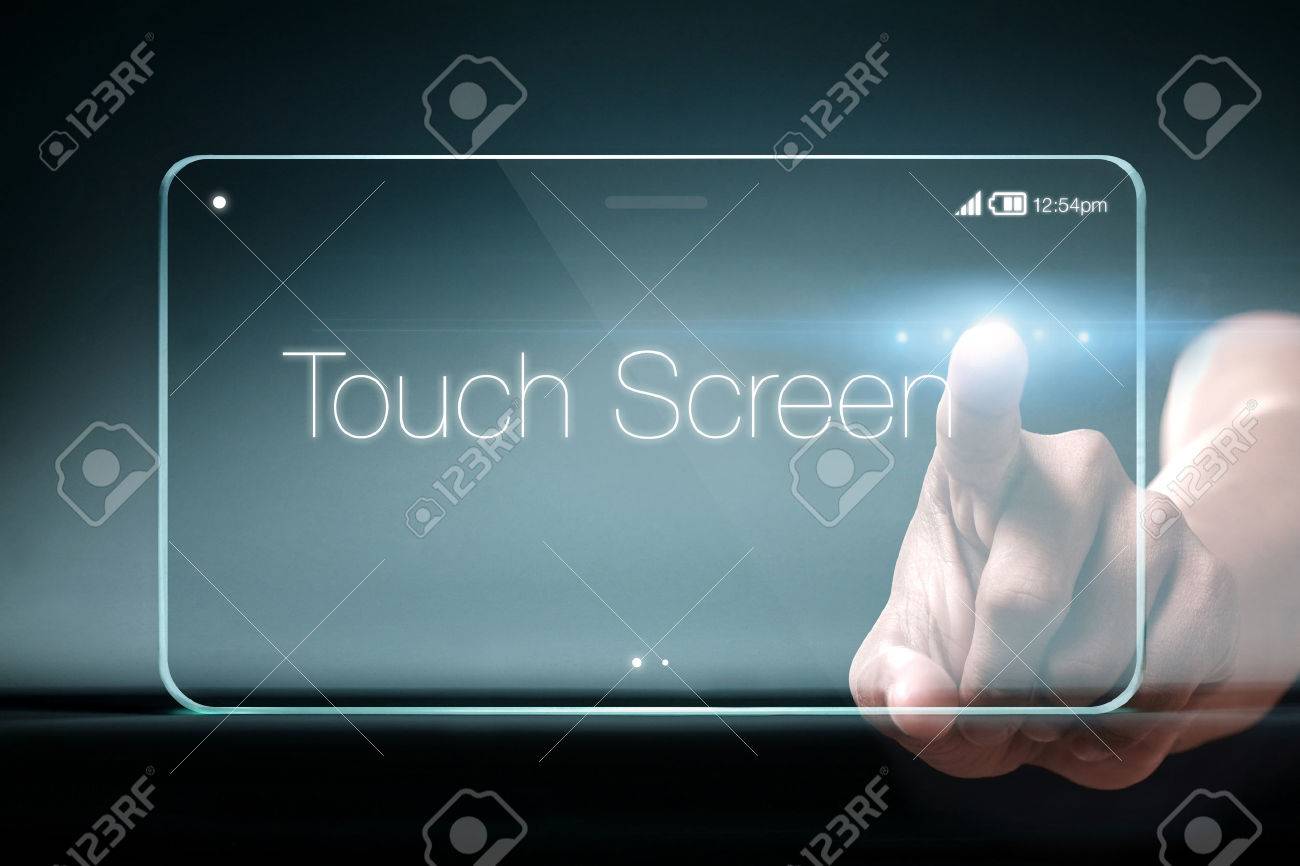Electronic visual display
A screen (screen, display or monitor ) is an electrically controlled display with no moving parts for optical signaling of dynamic information such as images or characters. The screen can be a stand-alone device or part of a device.
Distinction between
The terms screen, screen display and monitor are used in English often used interchangeably. Nevertheless, there are subtle differences in language. Unlike a video projector, whose projection, such as the "canvas", English also screensaver, screen ' is called, the representation of a screen is visible directly on the device. Displays (English general, display ') are called in German display devices in the broader sense, as well as flip- dot displays. As a monitor ( engl. monitoring, surveillance ' ), however, only screens are called, which are used as components or peripherals.
History
As an output device screens are based on Braun tubes since the 1950s for use, first with vectorial control (see vector screen). The later arisen video terminals tend to use raster graphics to build the image. For most of video terminals, the individual pixels can not be addressed directly, but rather a character generator takes over (character processor ) the representation of each character; the number and appearance of displayable characters is thus predetermined.
In the early 1980s, the graphical output has become increasingly important, impulsive here was, among other things, the development of CAD and graphical user interfaces (GUI, Graphical User Interface), which became popular with the Macintosh.
In 2003, according to a survey by the Society for Entertainment and Communications Electronics ( gfu ) sold in Germany for the first time more than conventional liquid crystal display device CRT. The screen sizes for typical desktop applications today are mostly between 50 and 75 cm, for laptops and notebooks are about 34 to 43 cm usual.
Early personal computer possessed as former computer terminals often integrated screens. Today it is common only in portable computers such as laptops and handhelds. Screens for stationary use today are usually fitted in a separate housing, which also include the electronics for their control and are usually connected via standard interfaces such as VGA or DVI to a plugged into the computer's graphics card.
Since about 2001, there are also screens that can display three-dimensional images called autostereoscopic displays or 3D monitors. The development is still in its infancy, a perfectly planned virtual reality is not yet possible with them.
In a so-called smart display is a monitor so limited is linked by radio to the computer and portable.
Properties
The screen size is the size specification of the screen and always refers to the diagonal of the picture tube, this is slightly larger than the viewable screen usually. However, this does not apply to types that do not require a conventional picture tube, see flat screen TV. Other characteristics of a monitor are the aspect ratio, the maximum vertical frequency from which a specific resolution (nowadays 1920 × 1080 pixels ) gives a as a flicker perceived refresh rate ( usually 60 Hertz ( Hz) ), brightness, contrast, response time and especially in liquid crystal displays, the number of pixels and the maximum viewing angle.
Multi-display
A multi-display, and multi-function display, the representation of multiple information is used. This can be any electronic device or a composite system with multiple screens. The purpose is to be able to a large number of values required or even images and signals at the same time show with multiple display devices, or in succession on the same display. These predefined or currently processed data must be visualized and output.
Today, it is used in a variety of applications, such as the electronic flight instrument display system in aircraft, in mobile phones (cell phones ), with tablet PCs or digital TV.
Well-known and widely used methods for the simultaneous representation is the window technology - which helped the Windows operating system to its name - the personal computer. Here, various programs may be arranged in so-called "windows" to each other, wherein one or more monitors can be used here.
Representation techniques
Presentation techniques used are:
- Field emission display ( " FED " )
- Liquid Crystal Display ( "LCD" ) Thin-film transistor display ( "TFT - LCD" )
Pixel mask types ( pixeling )
CRT monitor playback ( shadow mask )
CRT monitor playback ( aperture grille )
CRT monitor playback ( detail). All color points lie on a line, which are three electron beams ( each color a ) line by line stimulated to emit light.
Matrix of a TV screen
Areas of application
Apply this in
- Controls of machinery and equipment of all kinds
- Display devices in all areas of technology
- TVs
- Computer monitors
- Radar equipment, oscilloscopes,
- Imaging techniques in science
- Medical diagnostic and monitoring equipment (monitors )
- Notebooks, PDAs ( handheld organizer ), mobile phones
- Digital cameras and camcorders
- Electronic navigation equipment
- Advertisements, information signs on the road









